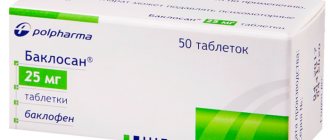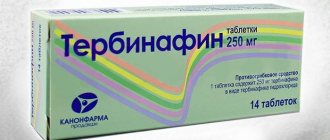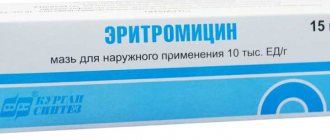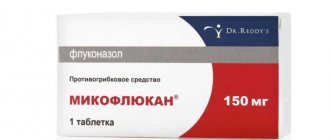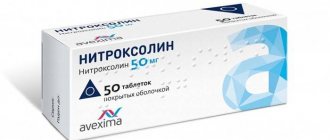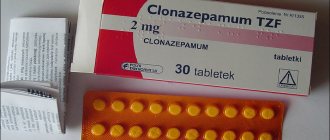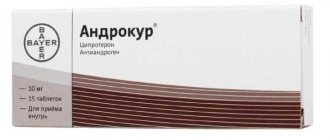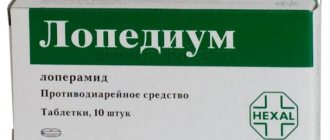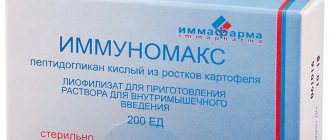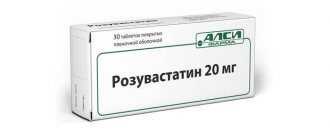24262
Author of the article
Evgeniy Nikolaevich Konoplev
Reading time: 5 minutes
AA
Narrowly targeted drugs help cure and eliminate pathological processes in the body. Lidaza is an effective medicine that is aimed at completely curing enzymatic reactions. This may be vein thrombosis, joint contracture, scars, hematomas, soft tissue sclerosis. The drug has been used for a long time as enzyme therapy.
Instructions for use of Lidaza
The drug is prescribed by injection (except intravenous). To treat scars, it is administered subcutaneously (under the scar) or intramuscularly (done close to the affected area). For ophthalmological diseases, electrophoresis is used using medication or a solution is dripped onto the mucous membrane of the eye. Complex therapy using an antibiotic is necessary. For respiratory diseases, inhalations are performed.
Composition and release form
| Release form of the drug | Ingredients of the drug |
| Hyaluronidase 64 units |
Pharmacodynamics and pharmacokinetics
Hyaluronic acid (mucopolysaccharide, contains acetylglucosamine), contained in the preparation, breaks down into glucosamine and glucuronic acid, thereby increasing tissue permeability and stimulating the movement of interstitial fluids. With a gradual decrease in hyaluronidase concentrations, the viscosity of hyaluronic acid is restored (the effect is temporary, lasts a short time). The drug improves joint mobility, promotes the resorption of hematomas, and softens scars. Pharmacokinetics have not been studied.
Indications for use
The drug is recommended for treatment for the following conditions:
- the presence of scars after injuries, operations, burns;
- low mobility of joints;
- long-healing ulcers on the surface of the skin;
- the presence of joint contractures;
- hydrocephalus;
- spondyloarthritis;
- osteoporosis;
- osteoarthritis;
- chronic tendovaginitis;
- skin diseases (scleroderma);
- diseases of the lumbar spine;
- myocardial infarction;
- ophthalmological diseases (keratitis, retinopathy, hemophthalmos);
- inflammatory diseases of the upper respiratory tract;
- hematomas (bleeding) of soft tissues;
- neuritis, plexitis.
Indications for use
The medicine is prescribed to patients who have scars. They can be caused by a burn, injury, or surgery. There are other pathological conditions in which it is advisable to use the drug Lidaza:
- ulcers of various etiologies that do not heal for a long time;
- there is stiffness in the joints;
- contracture of cartilage tissue (occurs during an acute or chronic inflammatory process, injury);
- osteoporosis;
- ankylosing spondylitis;
- pathology of lumbar discs;
- chronic tenosynovitis;
- scleroderma and other skin lesions;
- soft tissue hematomas.
Tizol preparations with Lidaza are often prescribed to patients as an effective preparation for skin plastic surgery when there is a possibility of cicatricial sprains. The medicine is used for pulmonary tuberculosis, which is complicated by nonspecific damage to the bronchi. Doctors may decide to use compresses with dimexide.
Lidaza helps eliminate inflammatory processes in the upper respiratory tract and obstruction in the lungs. The maximum effectiveness of the drug is observed in traumatic lesions of the peripheral and other nerve plexuses. This may be plexitis or neuritis. According to the doctor's indications, Lidase injections are used during the progression of hyphema, hemophthalmos, and retinopathy of various etiologies.
Directions for use and dosage
Single dose - 64 UE with procaine solution. The drug is used for parenteral injections (intramuscular and subcutaneous), locally as applications and compresses (for joint diseases). For the treatment of ophthalmic diseases, a 0.1% solution with an antibiotic is used. The product is used in the form of inhalations and vaginal suppositories. The required dosage, method of administration, and course of treatment are determined by the doctor.
Lidase for electrophoresis
The following recipe is used for electrophoresis:
- distilled water 60 ml;
- 300 IU of medication;
- three drops of hydrochloric acid (0.1%).
A buffer solution for lidase is also prepared. The drug is injected into the area from the anode. The procedure lasts about 20-30 minutes. An anesthetic is used before the procedure. It is necessary to conduct 20 sessions, once a day, every day without interrupting treatment.
Application in ophthalmology
The drug Lidaza is widely used by doctors to treat ophthalmic diseases. Used in combination with antibacterial drugs. Method of application: you need to use a 0.1% solution at room temperature, pull back the lower eyelid, drip a couple of drops, close the eye, do not open it for 30 seconds so that the medicine does not leak out.
For tuberculosis
In the presence of tuberculosis or other diseases of the respiratory system, the drug is administered parenterally (intramuscularly or subcutaneously) or inhalation. Therapeutic inhalations are carried out using a nebulizer, every other day for one month, once a day in a dosage of 5 ml of medication. If the therapy is ineffective, the course of treatment is repeated after two months.
- How to get a loan from Sberbank
- How to speed up hair growth at home
- How to teach a child to skate on a skating rink
Lidaza in gynecology
For gynecological diseases, suppositories with Lidase or an injection solution are used. Suppositories are not produced in large quantities, but are prepared in pharmacies with a prescription from a doctor. One suppository is inserted deep into the vagina every two days (on the third day). The course of treatment is ten administrations. The product can be used again after a month.
Contraindications
The medicine is not prescribed to patients who have hypersensitivity to individual components of the drug. Before starting therapy, it is important to familiarize yourself with other contraindications:
- acute infectious and inflammatory diseases;
- bleeding;
- intercurrent pathology;
- children and adolescents under 18 years of age.
The drug should not be used by inhalation in patients diagnosed with pulmonary tuberculosis if it occurs with severe respiratory failure. The medicine is not prescribed for bleeding in the bronchi or the presence of blood clots during expectoration.
Important contraindications are malignant neoplasms and fresh hemorrhages into the vitreous body. The drug is not prescribed during estrogen therapy, because pathological reactions will begin to occur in the body. They can lead to serious and sometimes irreversible consequences. There is no information about permission to treat children. With extreme caution and according to doctor's indications, the medicine is prescribed to pregnant women, as well as during lactation.
special instructions
Before use, it is necessary to conduct a skin test to determine the presence of allergies to the active substance of the drug (the drug is administered intradermally with an insulin syringe in an amount of 20 μl). Do not inject into areas of tumors, acute inflammatory processes, or infections. Treatment during pregnancy and lactation is recommended only if the effect is higher than the potential risks for the woman and the fetus.
Drug interactions
The drug Lidaza can enhance the effect of using local anesthetics. When treating with several medications simultaneously, you need to study their composition, as well as their compatibility. For advice, I turn to a therapist or a doctor of a narrow specialization who deals with treatment. Lidaza improves the level of absorption of drugs that are injected under the skin or inside the muscle.
Before starting therapy, it is important to conduct a quick test for the body's allergic reaction. 20 μl of hyaluronidase is injected into the skin and wait about 10-15 minutes. If there is no redness and irritation, then the patient can be prescribed treatment in full dosage.
This medicine is well tolerated, but it is forbidden to give injections or lotions to the area of infectious inflammation, as well as areas with a tumor. Hyaluronidase is not used during the progression of acute forms of hemorrhage.
Side effects of Lidaza
The following side effects are possible after taking the drug:
- The appearance of weakness, excessive sweating or high body temperature.
- Nervous system: headaches and dizziness.
- Respiratory organs: difficulty breathing and shortness of breath.
- Cardiac and vascular system: tachycardia, increased blood pressure.
- Allergic reactions: the appearance of rash and itching, the development of angioedema.
- Local reactions to injection: pain, feeling of heat at the injection site, swelling.
Side effects and overdose
Some patients may experience signs of side effects. More often they appear due to individual intolerance to individual components of the drug. A person experiences severe allergic reactions, which are accompanied by a painful rash.
With prolonged topical use, complications may appear on the skin. In this case, you need to urgently stop therapy and consult a doctor to select an analogue. Symptoms of overdose are nausea, vomiting, fever, dizziness, tachycardia. The patient's blood pressure drops sharply, local edema, erythema and urticaria occur.
To eliminate the clinical manifestations of an overdose, the doctor administers epinephrine and glucocorticosteroids. Additionally, antihistamines are prescribed to reduce the symptoms of an allergic reaction.
Lidaza's analogues
- Hyaluronidase is an enzyme preparation used to treat scars, contractures, nerve plexus lesions, hematomas, eye lesions, and skin diseases. It is administered subcutaneously, intramuscularly, or inhalation.
- Lidaza-M is a modern and inexpensive drug that has a wide spectrum of action for the treatment of lesions of the skin and mucous membranes. Available in solution and vaginal suppositories.
- Ronidase - the drug is a complete analogue, available in bottles with powder of 5 g.
Release form
The medicine is produced in the form of a lyophilisate. A solution for injection is prepared from it. The drug can be used topically. The pharmacy sells glass bottles in 5 ml packaging. They are carefully closed with a rubber stopper, as well as a rolled aluminum cap. The concentration of the drug is 64 units.
One package contains 10 bottles. The manufacturer provides printed instructions for use. The package includes a solvent. This is a bottle containing 5 ml of 0.9% sodium chloride solution.
Lidaza price
Lidaza in ampoules 64ED No. 10 (Moscow) has a price range from 204 to 320 rubles. The table shows the prices for the drug and the names of pharmacies:
| Pharmacy name | Price for the drug (rub.) |
| Pharmacy "Dialogue" | 204,00 |
| Internet pharmacy "Europharm" | 280,00 |
| Kremlin Pharmacy | 266.00 |
| Pharmacy IFC | 320.50 |
| Pharmacy ZdravZona | 250,25 |
Pharmacological properties
Lidase is an enzymatic medicine, for the production of which the testes of cattle are used, which contains hyaluronidase (the active substance included in the drug).
The proportional ratio of the volume of hyaluronate and hyaluronidase provides a high or low level of tissue permeability.
For example, the anti-inflammatory properties of acetylsalicylic acid are achieved through inhibition of hyaluronidase activity. Conversely, medications to increase tissue permeability stimulate hyaluronidase activity.
Thus, by increasing the concentration of hyaluronidase, the drug Lidaza is used to reduce the viscosity of hyaluronate for the period of taking the drug.
The effect of hyaluronidase on tissue is as follows:
- Decreased viscosity of extracellular fluids in connective tissues;
- Increased permeability of tissues and walls of blood vessels;
- Reducing the risk of edema;
- Stimulation of regenerative processes in the area of tissue scarring;
- Acceleration of hematoma healing;
- Prevention of the formation of new and reduction of the severity of previously acquired joint contactures;
- Improving motor function of joints.
"Lidaza": reviews of the drug
To understand how effective the drug is, just read the reviews of people who have had the opportunity to encounter Lidaza.
“I had to deal with this drug a couple of times in my life. In the first case, when undergoing a procedure using electrophoresis and Lidaza, when it was necessary to treat scars left after burns. I had to undergo no more than 10 electrophoresis sessions. I can’t say that I felt a clear effect, although the scars became noticeably softer.
In the second case, I had to be treated with that drug in gynecology, when there was severe inflammation of the ovaries. Complex therapy was prescribed, including Lidaza injections. I can say that the injections really helped, the inflammation quickly subsided during the course of treatment.”
Zhanna.
“I really want to write my review about the drug Lidaza. I had such a case. There was an operation, after which I began to experience very severe swelling in the incision area, after which the swelling began to spread throughout my body. My doctor prescribed Lidaza injections for me on time. What can I say: literally after a few injections, my condition began to quickly improve, and the swelling began to subside. So my review will definitely be in favor of this medicine.”
Maria.
“I didn’t want to write my review, but I’ll speak out.
They prescribed intramuscular injections of Lidaza because I had adhesions in my abdomen. I must say that the course of treatment was barely enough for the bumps to finally begin to resolve. Moreover, in the place where the injections had to be given, an allergy appeared in the form of hives. The drug may be effective, but it causes severe allergies and it didn’t work for me, so I had to stop taking this medicine and look for an analogue.” Catherine.
